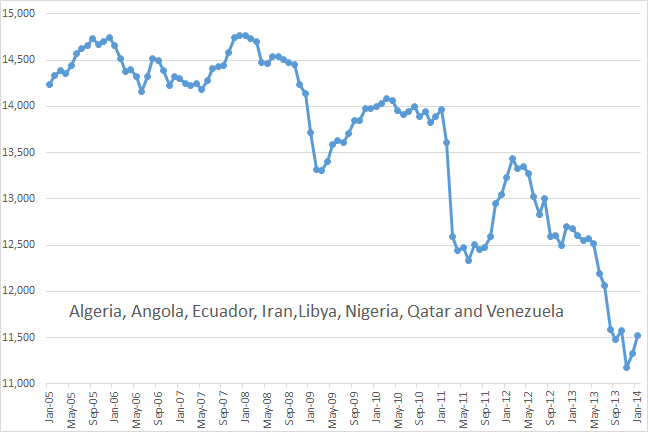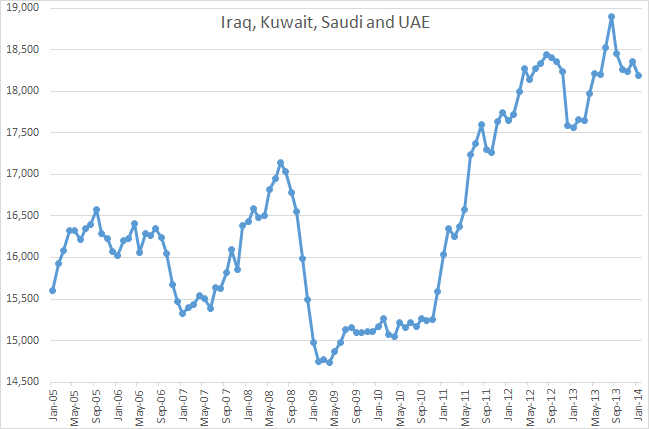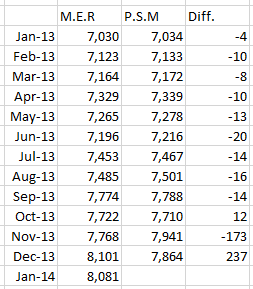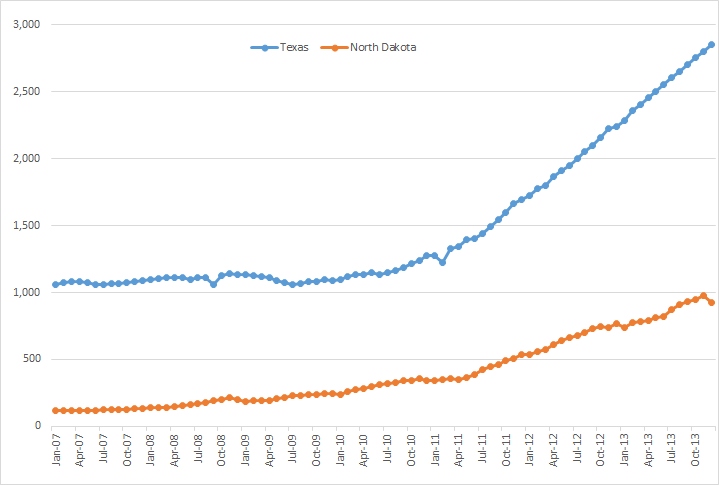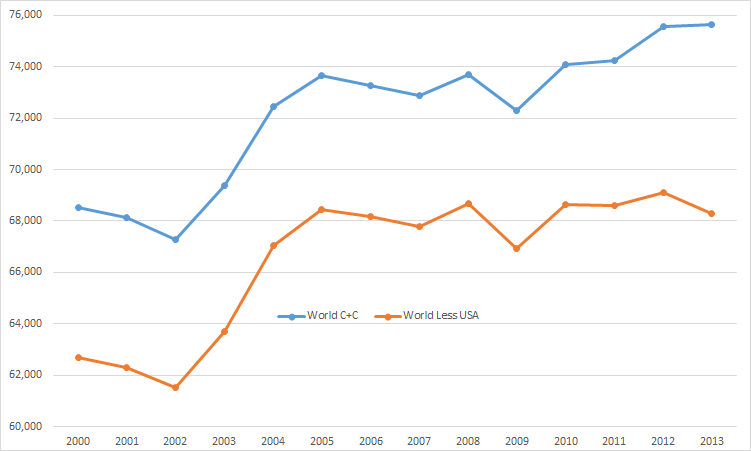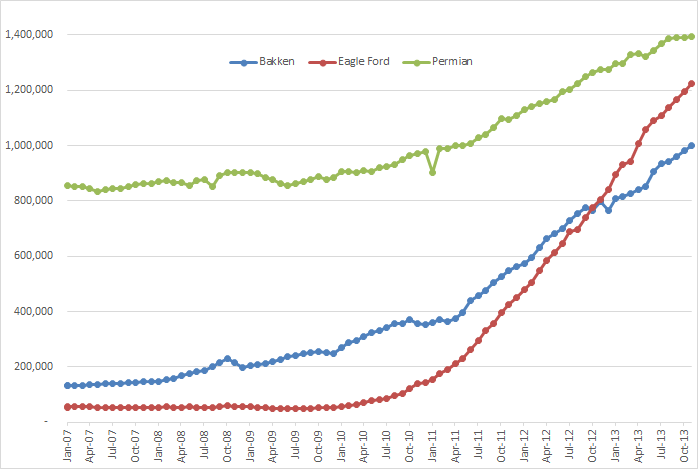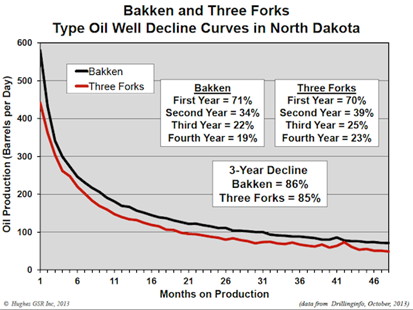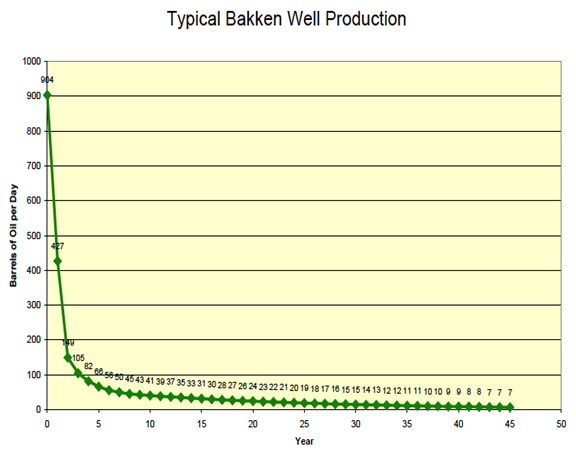Steve Kopits, in his recent presentation at Columbia University, ridiculed the IEA’s often used term a “Call on OPEC“. That is, the IEA looks at the world oil supply and if they see a supply shortage looming on the horizon they then issue a “Call on OPEC” to supply x number of extra barrels and fill that gap. But the next time the IEA issues such a call can OPEC deliver? Or, is OPEC already producing every barrel they possibly can.
One thing for sure, there are eight OPEC countries that are definitely producing every barrel they possibly can, those countries are Algeria, Angola, Ecuador, Iran, Libya, Nigeria, Qatar and Venezuela. The chart below is the combined production of those 8 nations.
All charts in this post are “Crude Only” in kb/d with the last data point Jan. 2014.
There can be no doubt that all eight of these OPEC countries are producing every barrel they possibly can. While it is true that Iran and Libya have political problems that is holding their production back, but political problems in that part of the world are likely to get worse rather than better.
But what about the other four OPEC nations. The chart below shows the combined production of Iraq, Kuwait, Saudi Arabia and the UAE.
It is my contention that not only are these four OPEC nations producing every barrel they possibly can but that they have little prospect of producing much more. I will examine each country one by one.
